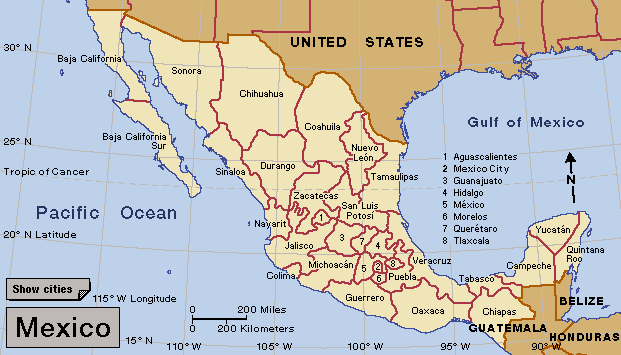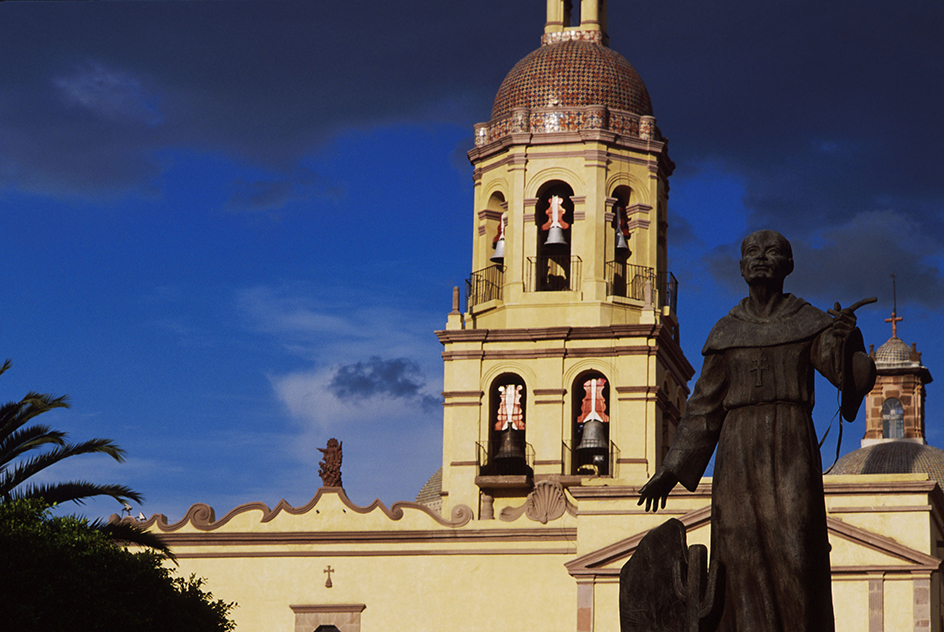Querétaro, << keh REHT uh roh, >> is a state in central Mexico. One of the country’s smaller states in area, it covers 4,420 square miles (11,449 square kilometers). At the time of the 2020 census, Querétaro had a population of 2,368,467. The state capital is also named Querétaro. The northeastern part of the state lies in the Sierra Madre Oriental mountain range, and the southwestern part is in Mexico’s Central Plateau region. Most of Querétaro has a temperate (moderate) and dry climate, with seasonal rainfall from June to October.

Querétaro has a diverse economy. Industries in the state produce automobile parts, paper, processed foods, and textiles. Agriculture contributes significantly to the economy, and tourism also generates some revenue. Northern Querétaro has mines that produce gold, opals, silver, and other metals.
The Otomi Indians lived in what is now Querétaro before Spain colonized the area in the 1500’s. Today, the state is home to their descendants. The Otomi founded the capital city before the Spaniards arrived. Querétaro became one of the original states of Mexico in 1824. Emperor Maximilian, who ruled Mexico from 1864 to 1867, established his court in the capital during the final year of his reign. The Mexican Constitution of 1917 was drafted at a convention in Querétaro city. In 1929, the capital hosted the first convention of the National Revolutionary Party. This party, now known as the Institutional Revolutionary Party (Partido Revolucionario Institucional, or PRI), governed Mexico continuously for 70 years.

